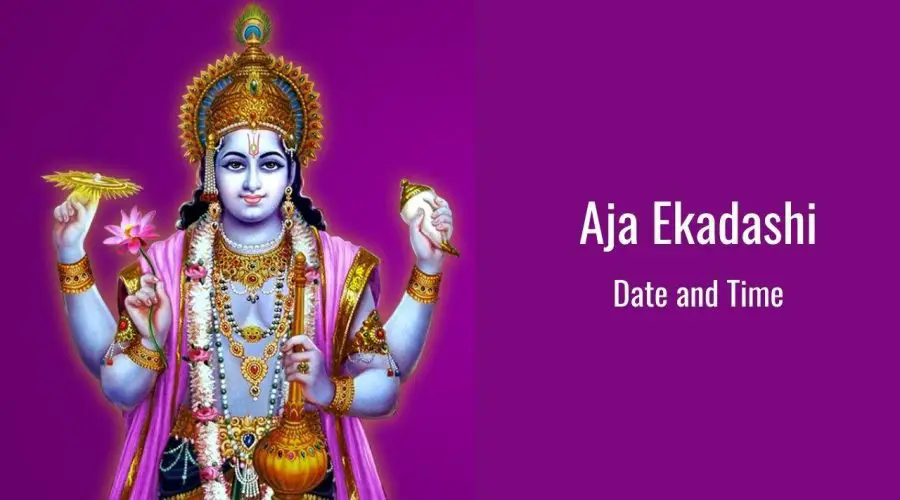Aja Ekadashi 2023: Date, Time, Rituals and Significance
Article Rating
☆☆☆☆☆ 3.8/5
The Ekadashi performed during Krishnna Paksha (the dark fortnight of the Moon) in the Hindu month of ‘Bhadrapada’ is the subject of Aja Ekadashi. ‘Ananda Ekadashi’ is another name for this Ekadashi.
Aja Ekadashi is observed in North India during the Hindu month of ‘Bhadrapada,’ while it is observed in other parts during the Hindu month of ‘Shravana.’ Lord Vishnu and Goddess Lakshmi are the only focus of Aja Ekadashi. This fast, or vrat, is seen to be the most beneficial of all and is practised with zeal and determination across the country.
Aja Ekadashi Date 2023
Sunday, 10th September 2023
Aja Ekadashi Rituals
- Devotees conduct a fast in honour of their deity, Lord Vishnu, on the day of Aja Ekadashi. The vrat observer should eat’satvik’ food even a day before the vrat begins, on ‘dashami’ (10th day), to cleanse the mind of all negativity.
- The Aja Ekadashi vrat observer rises at sunrise on the day of the vrat and bathes in mud and sesame seeds. It is necessary to clean the puja location.
- Rice should be maintained in an auspicious area, over which the holy ‘kalash’ should be placed.
- A red cloth covers the mouth of this kalsah, and an idol of Lord Vishnu is placed on top.
- The worshippers then offer flowers, fruits, and other puja items to Lord Vishnu’s image. In front of the Lord, a ‘ghee’ diya is also lit.
- Devotees who observe the Aja Ekadashi fast should refrain from consuming anything throughout the day, not even a drop of water.
- However, the Hindu scriptures state that if a person is sick or if a kid is present, the vrat can be observed after eating fruits.
- On this holy day, all grains including rice should be avoided. Honey consumption is likewise prohibited.
- On this day, followers study sacred texts such as the ‘Vishnu Sahastranam’ and the ‘Bhagwad Geeta.’ The watcher should likewise maintain vigil all night, adoring and meditating on the supreme lord.
- To gain the most out of the Aja Ekadashi vrat, the observer must also follow the ideals of ‘Brahmacharya.’
- After offering food to a Brahmin on the next day, ‘Dwadashi’ (12th day), the fats are broken. The dish is subsequently served to family members as ‘Prasad.’ On ‘dwadashi,‘ it is forbidden to eat brinjal.
Significance of Aja Ekadashi
Since ancient times, the significance of Aja Ekadashi has been recognised. The relevance of this vrat to Yudhisthira, the eldest Pandava, was explained by Lord Krishna in the ‘Brahmavaivarta Purana.’ Raja Harishchandra himself did this vrat, and as a result, he reclaimed his deceased son and lost kingdom. As a result, this vrat encourages a person to pick a road of redemption and, in the end, to be free of the cycle of birth and death. The Aja Ekadashi vrat watcher must maintain control over his or her body, emotions, behaviour, and food. The fast will cleanse both the heart and the soul.
All of a person’s sins from this life will be forgiven if he observes the Aja Ekadashi vrat with full devotion, according to Hindu Puranas and sacred writings. His or her life will be filled with joy and success, and they will be brought to Lord Vishnu’s dham, ‘Vaikunta,’ after death. It is also thought that adhering to the Aja Ekadashi vrat provides the same benefits as doing the ‘Ashwamegh Yagya.’

